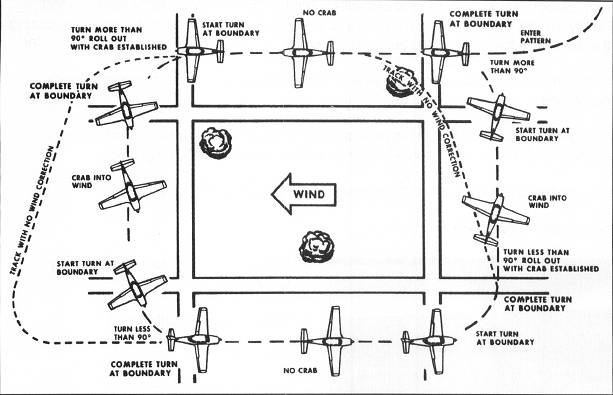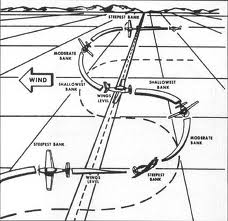Cards In This Set
| Front | Back |
|
What are the four fundamental involved in maneuvering an aircraft?
|
Straight forward and level flight, turns, climbs, and descents.
|
 In flying the rectangular course, when would an aircraft be turned less then 90 degrees? |
Corners 1 and 4.
|
 While practicing S-turns, a consistently smaller half circle is made on the one side of the road than on the other, and this is not completed before crossing the road or reference line. This would most likely occur in turn... |
4-5-6- because the bank is increased too rapidly during the early part of the turn.
|
|
What is ground effect?
|
The result of the interference of the surface f the Earth with the airflow patterns about an airplane.
|
|
Ground effect is most likely to result with what problem?
|
Becoming airborne before reaching recommended takeoff speed.
|
|
Floating caused by the phenomenon of ground effect will be most realized during an approach to land when at...
|
Less than the length of the wingspan above the surface.
|
|
What must a pilot be aware of as a result of ground effect?
|
Induced drag decreases; therefore, any excess speed at the point of a flare may cause considerable floating.
|
|
Which is a result of the phenomenon of ground effect?
|
The angle of attack generating lift is increased.
|
|
The airspeed rand to avoid while flying in ground effect is...
|
40 MPH and above.
|
|
While landing behind a large aircraft, which procedure should be followed for a vortex avoidance?
|
Stay above its final approach flight path all the way to touchdown.
|
|
How does the wake turbulence vortex circulate around each wingtip?
|
Outward, upward, and around each tip.
|
|
When taking off or landing at an airport where heavy aircraft are operating, one should be particularly alert to the hazards of wingtip vortices because turbulence tends to...
|
Sink into the flightpath of aircraft operating below the aircraft generating the turbulence.
|
|
Wingtip vortices are created only when an aircraft is...
|
Developing lift.
|
|
The greatest vortex strength occurs when the generating aircraft is...
|
Heavy, clean, and slow.
|
|
Wingtip vortices created by large aircraft tend to...
|
Sink below the aircraft generating turbulence.
|



